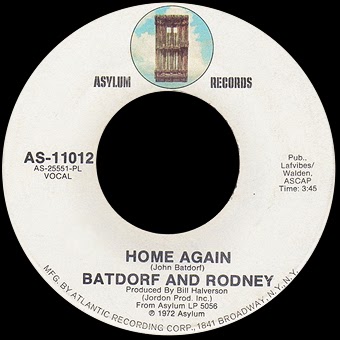Today we celebrate Reading Between the Grooves 1500th post. The timing of this auspicious occasion, however, is right in the middle of our Second Week Special – this month it’s “Mocking Byrds” – a look at covers of songs by The Byrds. We’ll deal with this first and then talk about the stats for this 1500th post.
Earlier this week, I mentioned that my affinity towards The Byrds goes back to 1966 with my first purchase of a 45 RPM single by the band. Later in the early 70s, they were the subject of my first cassette tape purchase. That album was “The Notorious Byrd Brothers.” This collection saw great personnel changes of the original members of The Byrds.
All five original members are believed to be present on this album, but only two, Roger McGuinn and Chris Hillman, were constants. There was a great deal of tension regarding the recording of the album, but despite this, “The Notorious Byrd Brothers” is often cited as a critical success for the band and it is considered more cohesive in style even though the band at the time was anything but cohesive. For more, see
a former post regarding this album that is still one of my favorites by The Byrds.
For today’s feature, we dip into the album’s depths for a little known tune named “Dolphin’s Smile.” It was written by David Crosby, Roger McGuinn, and Chris Hillman. If you listen to the outtakes of this recording, there was quite a bit of angst exhibited towards Michael Clarke on the recording of “Dolphin’s Smile.” In a word, he was not getting it and it took at least 15 takes for him to capture the spirit that the other three members and the engineer wanted.
For today’s cover, we provide a live version by Blue Coupe at Don O’Dell’s Legends Studio in Palmer, Massachusetts. Blue Coupe features three multi-instrumentalists that are no strangers to the rock music scene. For this number, Dennis Dunaway, formerly of Alice Cooper, is on bass and he is joined by the two Bouchard brothers who had been members of Blue Öyster Cult during their heyday.
Albert Bouchard, who was BÖC’s drummer, is playing the six-string acoustic and Joe Bouchard, BÖC’s bassist, is on the 12-string acoustic. All three as well as a couple of female back-up vocalists do an amazing job capturing the spirit of The Byrds’ original sans the sound effects, Moog synthesizer, and of course drums. The name Blue Coupe is an amalgamation of their former bands’ names: Blue Öyster Cult and Alice Cooper. Good stuff for our “Mocking Byrds” feature.
RBTG’s 1,500th Post Retrospect
Like I had reported with every other 100th post anniversary, I took a look backward on how we are doing visitor wise. I began this blog on September 26, 2009, but did not start monitoring the visits until October 16, 2009. Currently, we have 87 declared followers of the blog – up from 76 in February 2014. There are many others who have visited frequently without declaring themselves as followers. As noted with our 1400th post, Google+ remains a major source of new visitors.
The cumulative statistics for the blog are listed below:
| Variable | Statistic |
|---|
| Unique Visitors | 155,273 |
| Times Visited | 174,399 |
| Number of Pages Viewed | 249,046 |
| People Visiting 200+ Times | 2,819 |
| People Visiting 101-200 Times | 1,364 |
| People Visiting 51-100 Times | 1,210 |
| People Visiting 26-50 Times | 1,088 |
| Number of Visitor Countries Represented | 186 |
The Top Ten Visitor Countries
Since our 1,400th post, four new countries were added to the list: two from the Caribbean (Caribbean Netherlands and the British Virgin Islands), one from Central Asia (Kyrgyzstan), and one from Africa (Mali). The Top 10 countries remain the same; however, former seventh position Australia knocked Italy out of the sixth position.
| Rank | Country | Visits |
|---|
| 1 | United States | 84,957 |
| 2 | United Kingdom | 14,668 |
| 3 | Canada | 9,309 |
| 4 | Germany | 8,194 |
| 5 | France | 5,828 |
| 6 | Australia | 3,888 |
| 7 | Italy | 3,820 |
| 8 | Brazil | 3,671 |
| 9 | Spain | 2,793 |
| 10 | Netherlands | 2,789 |
As always, I want to take this time to thank all of you for your support of this site and the encouragement to keep going forward. Thanks again for Reading between the Grooves.


















